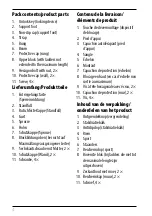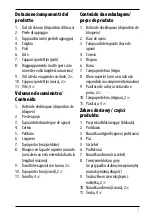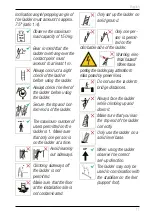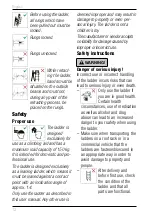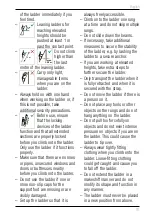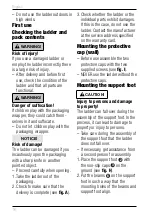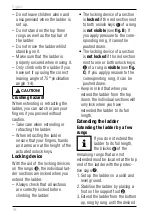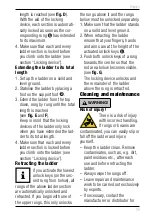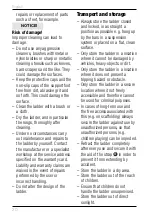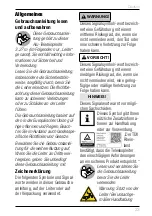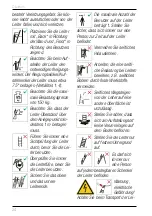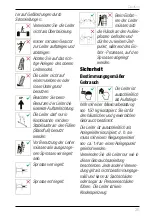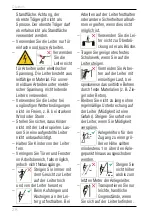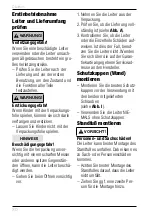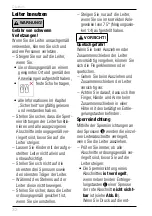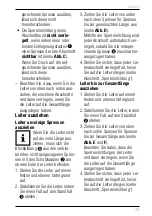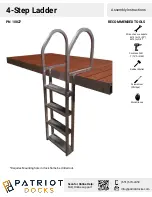
English
18
–
Do not leave children alone and
unsupervised when the ladder is
set up.
–
Do not stand on the top three
rungs as well as the top bar of
the ladder.
–
Do not move the ladder whilst
standing on it.
–
Make sure that the ladder is
properly secured when moving it.
–
Only climb onto the ladder if you
have set it up using the correct
leaning angle of 75° (inclination
angle 1:4).
CAUTION!
Crushing hazard!
When extending or retracting the
ladder, you can catch or jam your
fingers if you proceed without
caution.
–
Take care when extending or
retracting the ladder.
–
When retracting the ladder
ensure that your fingers, hands
and arms are at the height of the
actuated unlock keys.
Locking device
With the aid of the locking devices
on the rungs
5
, the individual lad-
der sections are locked when you
extend the ladder.
–
Always check that all sections
are correctly locked before
climbing the ladder:
• The locking device of a section
is
locked
if the red section next
to both unlock keys
1
of a rung
is
not visible
(see
fig. B
). If
you apply pressure to the corre-
sponding rung, it cannot be
pushed down.
• The locking device of a section
is
not locked
if the red section
next to one or both unlock keys
1
of a rung is
visible
(see
fig.
C
). If you apply pressure to the
corresponding rung, it can be
pushed down.
–
Keep in mind that when you
extend the ladder from the top
down, the individual sections will
only lock when you have
extended the ladder to its full
length.
Extending the ladder
Extending the ladder by a few
rungs
If you do not extend the
ladder to its full length,
the blocks
8
of the
remaining rungs that are not
extended must be located at the top
end of the ladder with the protec-
tive caps
7
.
1. Set up the ladder on a solid and
level ground.
2. Stabilise the ladder by placing a
foot on the support foot
2
.
3. Extend the ladder from the bottom
up, rung by rung until the desired
Summary of Contents for 7063596
Page 2: ...2 A B C 2 4 5 6 1 3 7...

